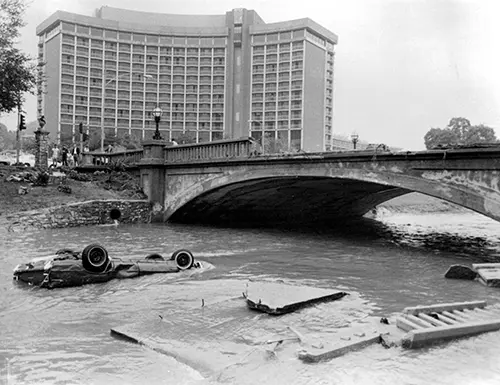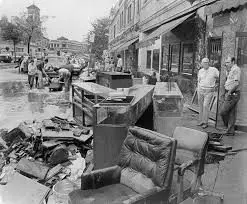
The infamous Brush Creek flood refers to a devastating flood in Kansas City on September 12, 1977, that caused 25 deaths, widespread destruction on the Country Club Plaza, and over $100 million in damage. While a severe storm caused this 1977 event, the creek’s outdated infrastructure and concrete lining created a swifter current, increasing its flood risk. This disaster led to significant improvements in the city’s stormwater system and remains a stark reminder of vulnerability to severe weather.
IMPACTS:
-
Heavy Rainfall:An exceptionally heavy storm dropped more than 16 inches of rain in some areas of the Brush Creek watershed, overwhelming the drainage system.
-
Infrastructure Weaknesses:The creek’s drainage system and surrounding bridges were not designed to handle such a deluge.
-
Swifter Current:Concrete lining of the creek, a poorly thought-out solution from the past, created a faster, more destructive current rather than preventing floods.
-
Devastation:Floodwaters surged through the Plaza, submerging businesses, sweeping away cars, and causing explosions due to natural gas leaks.RESPONSE:
-
Significant Damage:The flood caused extensive property damage, with figures exceeding $100 million.
-
Call for Change:The disaster prompted city officials to pursue permanent solutions and significant infrastructure improvements to Brush Creek.
-
Improved Infrastructure:The 1977 flood led to the development of the new Brush Creek flood control plan, which was completed after a subsequent flood in 1998.
-
Lasting Legacy:The 1977 flood is remembered as a wake-up call and a stark reminder of the city’s vulnerability to severe weather and the importance of robust stormwater infrastructure


 (Thanks to the NWS/Kansas City for this information.)
(Thanks to the NWS/Kansas City for this information.)
-










